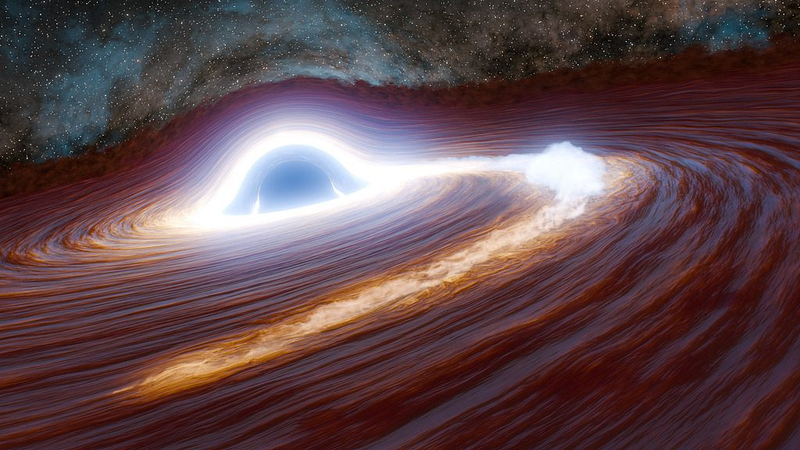Ever wondered what happens when a colossal star strays too close to a cosmic giant? Scientists have just witnessed the most energetic flare ever recorded from a supermassive black hole, igniting a cosmic beacon 10 trillion times brighter than our sun.
Located inside a galaxy 11 billion light-years away, this black hole packs 300 million times the sun's mass—nearly 75,000 times heftier than the one at the center of the Milky Way. The explosive flare, peaking in June 2018, was triggered when a massive star—at least 30 times, possibly up to 200 times, the mass of our sun—was ripped apart by the black hole's extreme gravity.
Lead researcher Matthew Graham from Caltech explains that the star's fall into the black hole wasn't by chance. "A collision likely knocked the star into a stretched, elliptical orbit, bringing it perilously close at its closest pass. It was spaghettified—stretched and pulled apart—before its material spiraled inward," he says.
As the stellar debris heated up, it shone brilliantly, outshining any black hole flare observed before. During observations with telescopes in California, Arizona and Hawaii, the flare brightened by a factor of 40, reaching 30 times the luminosity of previous records. Researchers ruled out alternative events like supernovae, jets or gravitational lensing to confirm this was a tidal disruption event—the cosmic destruction of a star by a black hole.
This stellar drama is still unfolding. The flare is gradually fading now, but models predict the luminous dance will last around 11 years total, offering astronomers an unprecedented window into black hole physics and stellar dynamics in the early universe.
For young global citizens, entrepreneurs, activists, and digital nomads alike, this discovery isn't just vivid imagery—it’s a reminder that our universe is full of extreme events that shape cosmic evolution and fuel breakthroughs in technology and theory. Stay curious—space is far from done surprising us.
Reference(s):
Star-eating black hole unleashes record-setting energetic flare
cgtn.com




